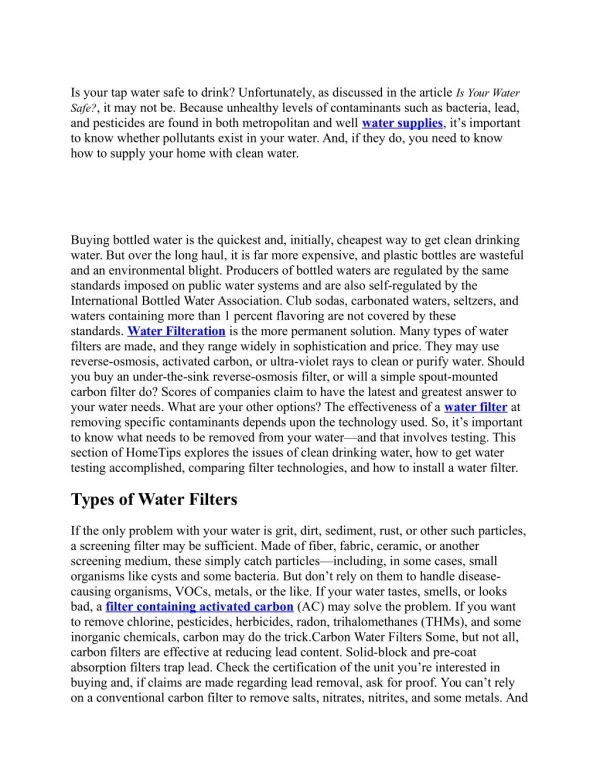Water Filters Buying Guide
If you must remove inorganic chemicals such as salts, metals (including lead), minerals, nitrates, asbestos, and some organic chemicals, consider a reverse-osmosis (RO) water filter. Actually, most models include carbon pre-filters and post-filters, which will catch sediment, pesticides, herbicides, THMs, and radon. RO filters remove lead, but some don’t remove chlorine (if this is claimed, request proof of performance). The carbon post-filter is used to improve the water’s taste. Pre- and post-filter cartridges should be replaced annually. Most RO filters are connected directly to plumbing and are located beneath the sink. A small tank stores clean water until needed, and tainted water drains out through a line connected to the sink trap. Drinking water flows through a special, separate sink-top spout. Some models have an automatic valve that eliminates the waste typically associated with RO filters—conventional models waste about 3 gallons for every gallon of water they produce. They generally cost from $200 to $400.
★
★
★
★
★
77 views • 4 slides



